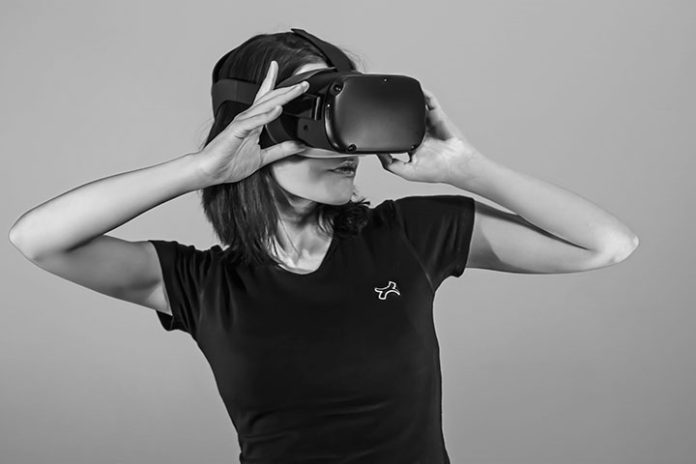In this article, we will talk about the challenge regarding the need to start having digital identification systems, which are closer to a virtual identity that provides us with security and, in parallel, speed and comfort when entering social platforms. Web3 or services and virtual worlds of the Metaverse. In this sense, talking about avatars rather than profiles and dynamic digital identities is increasingly common.
Dynamic digital identity: Speed, convenience and security
We are giving up our data in exchange for convenience. We don’t stop thinking about security in itself; even if they tell us that the password is “secure, ” we believe and trust it.
From the perspective of web3 and the blockchain, through our wallet, we can control our data and have a digital identity in which we are the ones who decide with whom we share that data and for what. In this way, we already have the security part covered.
And suppose we add double-factor authentication (2FA) to our wallet. In that case, we add an extra layer of security for all types of interactions that may be more delicate, such as economic transactions.
But what about speed and convenience? Yes, our wallet also gives us that speed and convenience, but after an onboarding, that is quite unfriendly to the general public. Which often causes us to return to using “secure” Google passwords or to re-authenticate ourselves through our profiles on social networks.
What is onboarding like on Web3?
What should be easy and provide us with security and control never seen before escapes us due to the complications of this onboarding process and not making it intuitive enough to go unnoticed. …they are concepts that not everyone understands and before which that feeling of fear appears that returns us to the “bad known”.
The second point of common sense: something that will provide us security and control, shouldn’t onboarding provide it to us? This is one of the biggest challenges when introducing the general public to the web3 ecosystem. It gives them the same convenience and speed as logging in with their social network profiles.
It is not an easy task, but it represents a challenge from which, if we emerge victorious, we will have taken a giant step towards adopting web3 by a majority of the public.
Also Read: What Does The Metaverse Offer To Healthcare Environments?
Challenges to widespread adoption on Web3
The widespread adoption of Web3 comes with new challenges. In this article, and applying common sense perspective, we address one of them: our avatars on the web3.
Avatars, that image that represents us in different virtual environments, our letter of introduction to other users with whom we can interact in three-dimensional worlds, which are a fundamental part of our digital identity.
We already have our wallets. Now we choose an avatar creation platform; we design it to our liking (more or less realistic, cartoon style, a version that is most similar to us, an idealized vision we have of ourselves, a cyberpunk fantasy…) The possibilities are practically unlimited. And we save them as an NFT in our wallet.
We return to common sense: What if we want to modify some characteristics of that avatar? Will we create another avatar from the beginning and save it again as another NFT? Will we have an NFT for each modification we want to make? It doesn’t make much sense.
An avatar should be something dynamic-editable without having to go through the entire process every time, and this is where the concept of dynamic or editable NFTs comes into play.
Importance of dynamic avatars
To better understand the concept of avatars as dynamic NFTs, let’s analyze this simile: The basic NFT is our DNA, which tells us what we are physically like (height, hair colour, eyes, appearance…). If I want to change my hair colour, I go to the hairdresser; I use coloured contact lenses to change the colour of my eyes… But we do not modify our DNA to create a copy of ourselves with those variations.
The case of our avatar should be the same. The base NFT (DNA) says who we are (digital identity), to which we add that dynamic layer so that any modification we make to our appearance does not require the creation of an NFT but is a dynamic file that reads our base NFT.
This idea becomes vitally essential with the rise of digital fashion. In addition to changing the appearance of our avatars, we want to be dressed in the latest fashion since that gives us status and differentiation from the rest of the avatars with which we interact. Nor will we go dressed the same way to a work meeting as to a virtual concert.
Dynamic avatar NFTs also have great importance in the Metaverse economy. All our transactions to modify our appearance move one of the wheels of monetization in the Metaverse. This makes creating new and exclusive collections profitable for brands and digital fashion designers.
Without forgetting that when we buy digital fashion as NFTs, we become part of that Metaverse economy, being able to sell those items from our avatars again, just as we can sell second-hand clothes, with the difference that digital fashion is not worn out. So we can trade with it without the limitations that we would have in the physical world.
Dynamic digital identity opens the door to new challenges to face, where through knowledge, the only limit is our creativity.
Also Read: What Is The Facebook Metaverse?

